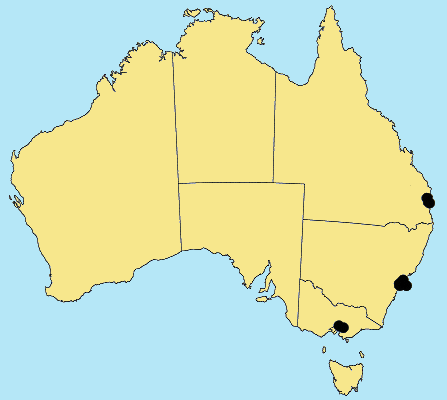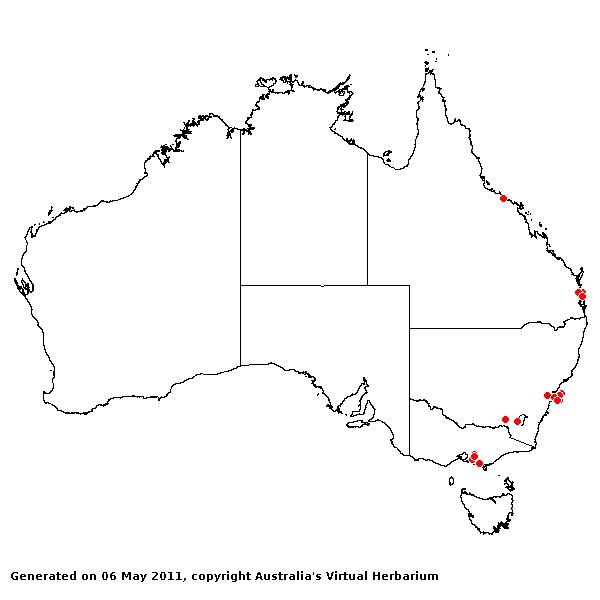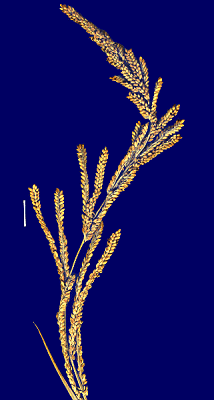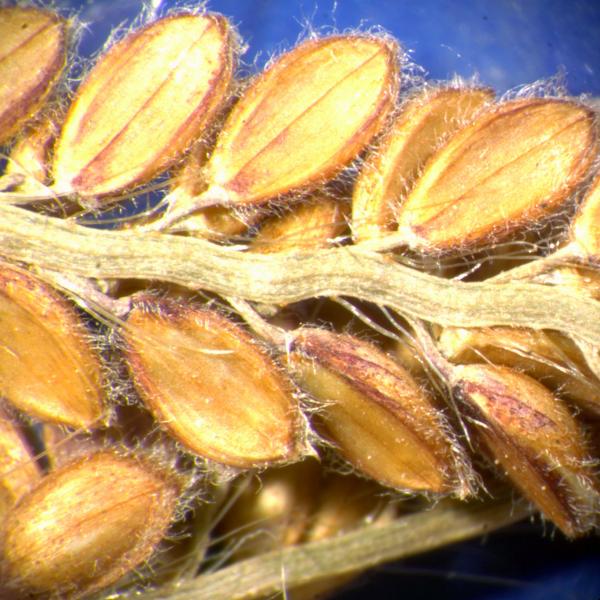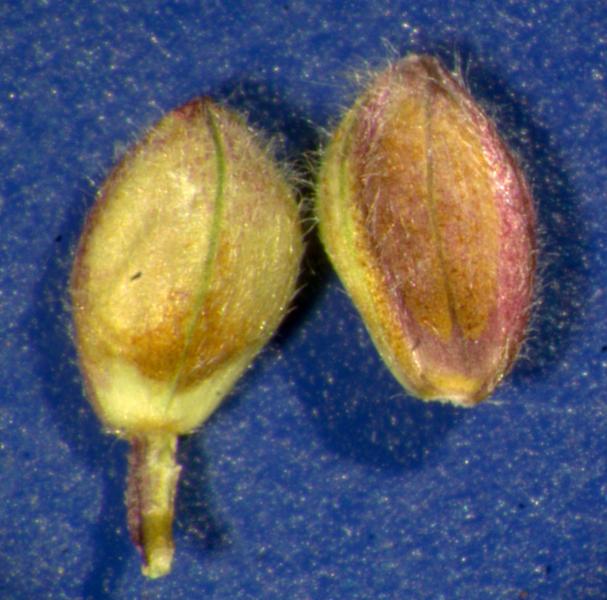Paspalum quadrifarium* Lam. Gram.
Icon. 2: Tab.128 (1828).
Classification. (GPWG 2001) : Subfamily
Panicoideae. Paniceae.
Type of Basionym or
Protologue Information: LT: Commerson s.n., Argentina: Buenos Aires
(P-LA; ILT: FI, P, US-2855979 (fragm. ex P-LA & photo)). LT designated by
Parodi, Revista Mus La Plata 1: 244 (1937).
Key references
(books and floras): [2002] D.Sharp & B.K.Simon, AusGrass, Grasses of
Australia, [2008] S.W.L.Jacobs, R.D.B.Walley & D.J.B.Wheeler, Grasses
of New South Wales (330).
Illustrations:
[2008] S.W.L.Jacobs, R.D.B.Whalley & D.J.B.Wheeler, Grasses of New South
Wales, 4th edn (330).
Habit.
Perennial. Rhizomes absent or present, short. Stolons absent. Culms erect,
90–200 cm tall, 4–7 -noded. Mid-culm nodes pubescent. Lateral branches simple.
Leaf-sheaths glabrous on surface. Leaf-sheath auricles absent, or present.
Ligule an eciliate membrane, 1–4 mm long, obtuse. Leaf-blades 15–70 cm long,
4–8.5 mm wide. Leaf-blade surface scabrous, glabrous.
Inflorescence.
Inflorescence compound, a panicle of racemes. Racemes 15–25, appressed or
ascending, 3–10 cm long, 5–8 mm wide, bearing 50–100 fertile spikelets on each.
Central inflorescence axis 10–25 cm long.
Spikelets.
Spikelets pedicelled. Fertile spikelets 2-flowered, the lower floret barren
(rarely male), the upper fertile, comprising 1 basal sterile florets,
comprising 1 fertile floret(s), without rachilla extension, ovate, dorsally
compressed, 2.1–2.8 mm long.
Glumes. Glumes
thinner than fertile lemma. Upper glume ovate, 2.2–2.8 mm long, hyaline or
membranous or chartaceous, without keels, 3–5 -nerved. Upper glume surface
indumented. Florets. Basal sterile florets 1, barren, without
significant palea. Lemma of lower sterile floret 100 % of length of spikelet,
chartaceous, 3 -nerved.
Fertile lemma 1.9–2.6
mm long, without keel. Anthers 3.
Continental
Distribution: Australasia and South America.
Australian
Distribution: Queensland, New South Wales, Victoria.
Queensland:
Wide Bay, Moreton. New South Wales: Central Coast. Victoria:
Gippsland Plain.
Notes.
Similar to P. exaltatum, however, South American taxonomists recognize
them as distinct.
Introduced. In
tropical and subtropical rain forests and tropical and subtropical wet
sclerophyll forests. Flowers July.-Oct.
